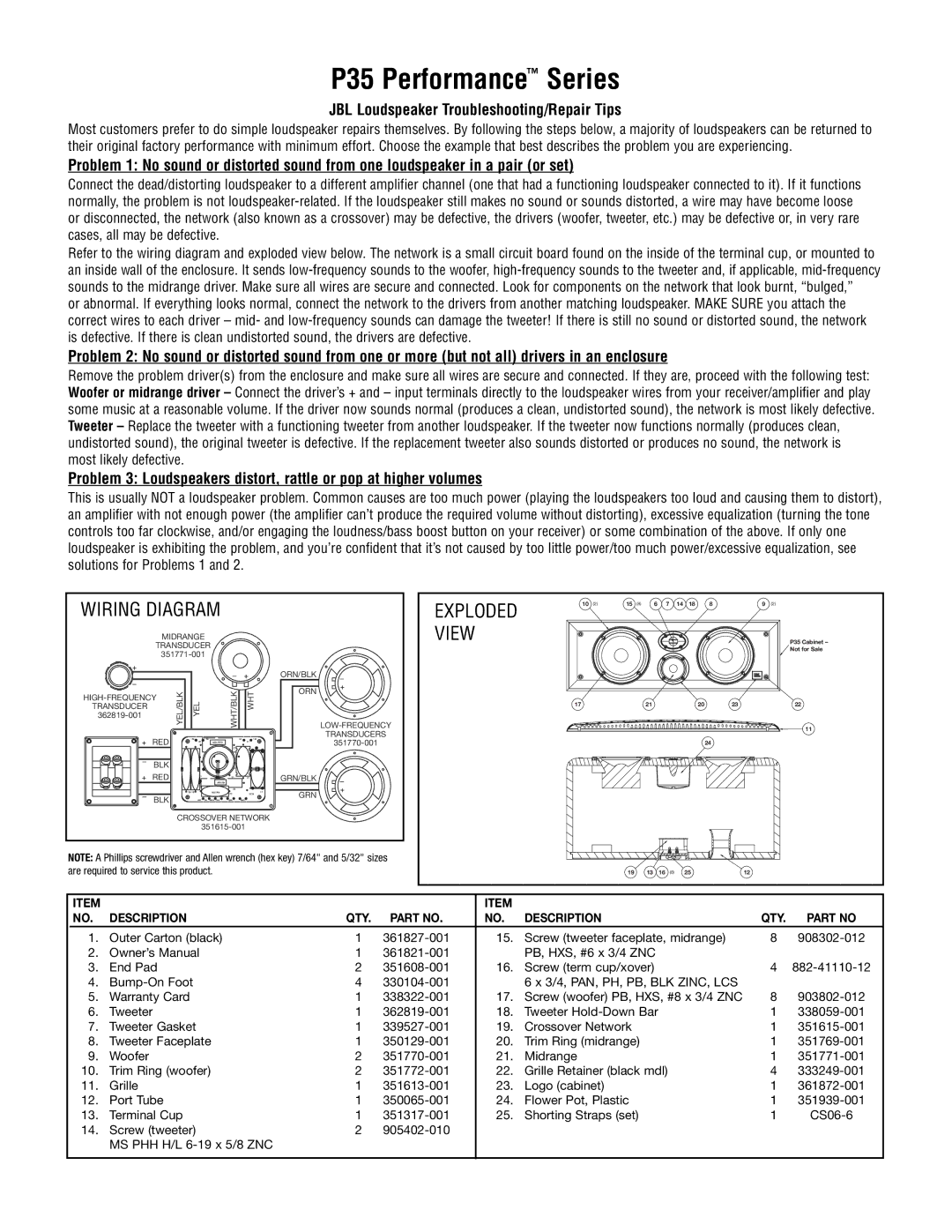P35 specifications
The JBL P35 and P25 are part of JBL's esteemed lineup of professional audio products, celebrated for their cutting-edge technology and robust performance. Both models serve as ideal solutions for various audio applications, ranging from professional sound engineering to recreational usage, making them highly sought-after options in their respective categories.The JBL P35 is designed for serious audio professionals who demand the highest fidelity in sound reproduction. It features a 3-way speaker design, which allows for precise audio rendering across multiple frequency ranges. This design includes a dedicated woofer, midrange, and tweeter, ensuring that bass notes are deep and resonant while highs are crisp and clear. One of its standout technologies is the proprietary JBL waveguide, which contributes to an expanded sweet spot and excellent stereo imaging, providing listeners with an immersive audio experience.
In contrast, the JBL P25 serves as a more compact, versatile alternative without compromising on sound quality. This 2-way speaker configuration employs a high-efficiency driver that delivers exceptional performance in smaller spaces. The P25 is particularly popular among mobile DJs and musicians for its lightweight design and easy portability. Its rugged build quality ensures durability, making it suitable for both studio and on-the-road uses.
Both the P35 and P25 utilize JBL's advanced transducer technology, which enhances acoustic clarity and accuracy. These models are engineered to handle high power levels, allowing them to integrate seamlessly into professional setups or home studios. Furthermore, their compatibility with various amplifiers offers a high degree of versatility, permitting audio professionals to tailor their setups to meet specific requirements.
Another critical characteristic of both models is their aesthetic appeal. The sleek design, coupled with JBL’s iconic branding, ensures that they not only perform excellently but also look professional in any setting. Users can expect reliable performance without compromise, making the P35 and P25 popular choices in live sound and studio applications alike.
In summary, whether a user opts for the JBL P35 or P25, they are guaranteed superior sound quality, durability, and a range of features designed to enhance any audio experience. Both models embody JBL’s commitment to innovation and excellence in the world of professional audio equipment.

